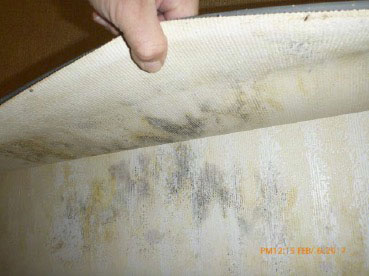Classrooms Safe After Mold Found
May 3, 2017
After the excessive rainfall in the last few months, parts of SJHHS flooded, which led to the growth of mold in some of the buildings on campus.
SJHHS has experienced rain damage in practically every building on campus. The rain has affected the buildings in various ways–damage on the walls, floors, ceilings, and giant puddles blocking entryways. However, the areas of concern were two classrooms in the D building (D03 and D04), two classrooms in the E building (E06 and E07) and the Badlands Stadium snackbar.
The school took action and blow dried all of the affected areas. For the areas of concern, the school hired an outside air quality team to test for any mold present.
Forensic Analytical Consulting Services (FACS) inspected these areas and checked for the appearance of mold. On February 20, 2017, there was evidence of mold damage in rooms D03 and D04 as well as the stadium snack bar. B06 was also inspected and was concluded to have no visible mold; however, fans occupy the classroom to dry all of the excess moisture from the water damage.
As for the two affected classrooms in the D building, FACS concluded that the planters located outside of the classrooms were the primary cause of the damage. The rainwater flooded in the planters and seeped into the walls of the classrooms. This resulted in mold discovered on the base of the walls and water damage on the carpet. FACS recommends drying and cleaning the mold and then conducting an assessment–which the school plans to do. SJHHS has already taken action by fixing the drainage issues in the planters.
The two teachers who occupy these classrooms, Jennifer Tatala and Carolyn Griner, had to leave their classrooms in the D building and relocate to other classrooms.
“Sadly, we had been displaced since the end of January,” said Tatala. “I think this situation is hard on the teachers especially because we have to take all of our day supplies from our classrooms and take them with us as we go from classroom to classroom.”
Griner has been allowed back into her classroom while Tatala is still relocated.
The snack bar and ticket booth in the stadium had the most damage from the rainstorm. Due to the poor air ventilation in the room, there is an abundance of visible mold damage. The school is being proactive and has plugged, or quarantined, the building from public use until there is no more evidence of mold.
This is an issue that the school is taking care of and is working to prevent from occurring in the future.
According to the World Health Organization, “Health hazards [may] result from a complex chain of events that link penetration of water indoors, excessive moisture to biological growth, physical and chemical degradation, and emission of hazardous biological and chemical agents.”
As concerning as this is, “No students have been harmed and action has been taken to eliminate potential dangers to our students and faculty,” said Assistant Principal Darrin Jindra, who has been strongly engaged in this issue.



